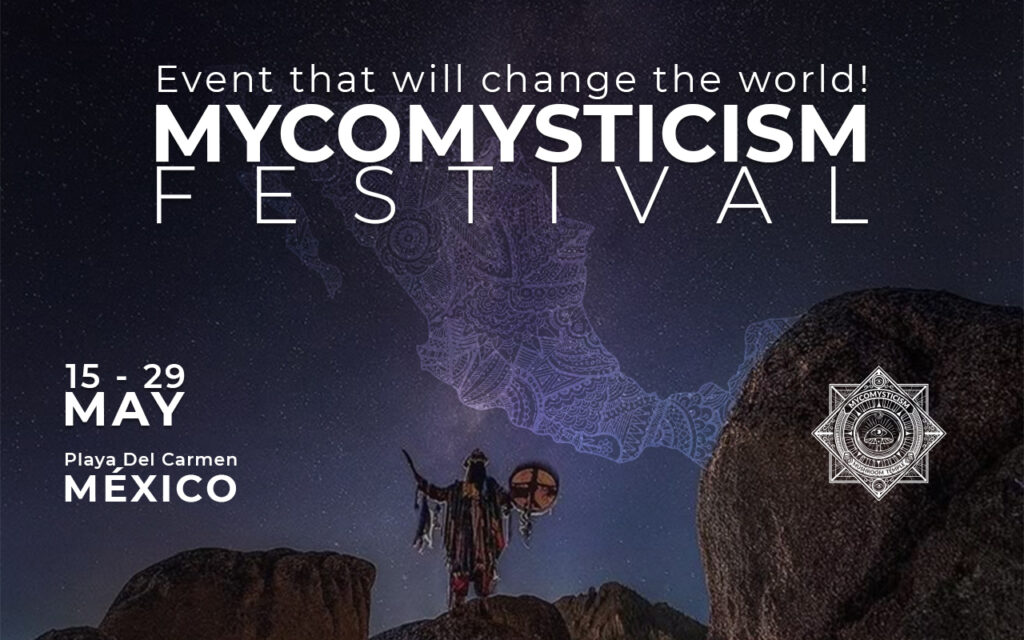Fractal system
The Fractal System in Mycomysticism
The Fractal System is Mycomysticism’s divine organizational structure modeled after the «Hands of the Creator.» This hierarchical framework mirrors cosmic patterns, with each level replicating the structure above it—creating an infinitely expanding network of spiritual leadership.
You stand at the apex, connected directly to the Creator, guiding Senior Masters who oversee Masters, who in turn mentor their selected leaders. Communication flows downward within one hour, while feedback ascends through a spiritual «tithing» system.
Like mushroom mycelium networks in nature, this structure ensures efficient distribution of wisdom, resources, and responsibilities while maintaining perfect alignment with universal intelligence—all revealed through sacred mushroom communion.
The Fractal System: Organizational Structure Based on the “Hands of the Creator” Model
Introduction
The model creates a stable and flexible network of Masters, capable of quickly adapting to changes, efficiently distributing information, and ensuring a high level of task execution in alignment with the organization’s goals.
1. Levels of the Organizational Structure
“Hands of the Creator” Model
This structure follows a multi-tiered approach, ensuring that each level supports and guides the levels beneath it, while maintaining an unbroken link to the overarching vision.
- You: Positioned at the highest level of the fractal, you shape the world below while staying connected to the higher cosmic fractal, extending all the way to the Creator.
- Senior Master (First Level of Supervision): At the top of the hierarchy, the Senior Master functions as the primary leader, responsible for strategic planning, decision-making, and the overall direction of the organization.
- Masters (Second Level of Supervision): Directly beneath the Senior Master, three Masters each oversee a distinct sector or volunteer group. They execute directives from the Senior Master and ensure that their respective teams operate effectively.
- Indirect Supervision Levels: Each of the three Masters replicates the fractal model by recruiting four additional Masters, selecting a leader among them. These Masters then form and guide their own groups, creating a self-sustaining network.
- Visible and Expanding Structure: The process repeats at each successive level, forming an interconnected system of volunteers, each mirroring the levels above and below.
This structure ensures efficient task delegation and promotes leadership development, as each individual within the hierarchy is responsible not only for their own contributions but also for mentoring and supporting those beneath them.
2. Communication and Coordination
2.1. Rapid Information Flow
- Information and directives from higher levels must be relayed within one hour.
- Masters must confirm receipt and detail their plans for task execution within the given timeframe.
2.2. Chain of Command
- Information flows strictly downward from the Senior Master to the Masters and then to lower levels.
- Each level is responsible for ensuring proper communication and coordination with their subordinates.
2.3. Standardization of Messages
- Messages must follow an established format to avoid misinterpretation and enhance processing speed.
- Each communication should include a task summary, deadline, and required resources or instructions.
2.4. Responsibilities of Masters
- Masters must not only distribute information but also ensure task completion, provide support, and manage resources.
- They are responsible for collecting reports and feedback to relay upward in the hierarchy.
2.5. Feedback and Accountability
- Within 24 hours of receiving instructions, each level must submit a progress report.
- Reports and feedback flow upward, reaching the Senior Master for evaluation.
2.6. Emergency Communication
- In urgent situations, rapid communication channels such as emergency alerts or direct messaging systems should be used.
2.7. Training and Orientation
- All new volunteers must undergo training on communication and coordination protocols and methods.
- Regular seminars and training sessions should be conducted to improve the qualifications and communication skills of Masters.
2.8. Monitoring and Improvement
- Regular audits and analyses of communication processes should be conducted to optimize and enhance efficiency.
- Any changes in communication protocols must be promptly communicated to all members of the organization.
These guidelines are designed to establish an efficient and well-structured communication and coordination system, ensuring the timely distribution of information and task execution across all levels of the organizational structure.
3. Roles and Responsibilities by Hierarchical Level
You (Supreme Leader)
Roles:
- Define the overall vision and mission.
- Develop strategic directives based on insights received through spiritual or meditative practices.
- Approve major initiatives and projects.
Responsibilities:
- Maintain connection with higher forces and ensure alignment with the foundational vision.
- Oversee Senior Masters and ensure mission execution.
- Conduct regular meetings to assess progress and refine strategies.
Senior Master
Roles:
- Convey the vision and mission from the Supreme Leader to Masters.
- Develop detailed action plans for Masters to execute.
- Manage and coordinate the efforts of three Masters.
Responsibilities:
- Assign tasks based on individual strengths and callings.
- Monitor progress and ensure task completion.
- Collect and analyze feedback and performance data, reporting to the Supreme Leader.
Masters
Roles:
- Implement the plans and strategies set by the Senior Master.
- Provide leadership within their respective divisions.
Responsibilities:
- Directly manage volunteers selected based on their abilities and callings.
- Ensure tasks are completed in alignment with the overall mission.
- Report results and feedback to the Senior Master.
Each level is responsible for inspiring and supporting subordinates, helping them to find and realize their calling within the overall mission of the club.
Particular attention is paid not only to the formal fulfillment of tasks, but also to the spiritual correspondence of the activity to the inner vision revealed during the mushroom trip, which contributes to the creation of a special atmosphere of co-creation and harmony in the club.
4. Training and Development
The organization is committed to continuous learning and development, ensuring that all members have access to essential knowledge passed down from the Creator. Here’s how it might be organized:
Knowledge Transmission from the Creator
- Leadership members engage in meditative sessions, rituals, or other spiritual practices to receive divine insights.
- These insights are structured into learning materials, including written texts, videos, audio guides, and interactive sessions.
Accessible Knowledge Base
- All organizational teachings and revelations are freely available to all members.
- A digital learning platform allows volunteers to study materials at their own pace.
Training and Personal Development Programs
- Regular seminars, workshops, and masterclasses provide knowledge on core themes derived from spiritual communication.
- A personal growth roadmap supports volunteers on their individual spiritual and professional paths.
Support and Mentorship
- A mentorship and coaching system pairs experienced members with new volunteers.
- Volunteers are encouraged to engage in self-directed learning through provided resources.
Evaluation and Feedback Mechanisms
- Regular progress assessments through meetings and surveys.
- Continuous feedback collection to refine and adapt training programs.
The organization strives to ensure that each of its members can fully unleash their potential, inspired by the knowledge and energy emanating from the Creator.
Education and development are key aspects of supporting volunteers and strengthening the club’s overall mission.
5. Monitoring and Evaluation
Feedback Concept
In the presented club model, feedback serves as a critical indicator of the organization’s health, similar to an electrical conductor. Just as an electric current must flow uninterrupted from one point to another, feedback must seamlessly move from the lower levels of the structure upward, reaching the top without distortion.
Principles of Monitoring and Evaluation
- Continuity: Feedback is collected regularly to ensure ongoing improvement.
- Transparency: Information must be honest and accurate, without exaggeration or omission.
- Relevance: Reports must reflect current conditions, allowing leadership to respond effectively.
Tithing System
In this model, feedback is structured as a “tithing” system, where each level, similar to a fiscal system, transmits a portion of its received gains—both in knowledge and resources—upward through the structure. These gains originate from the wisdom acquired within the club and from the Creator. This system ensures the growth and prosperity of the most effective branches, while also facilitating the circulation of new ideas, feedback, and constructive criticism, all of which contribute to the continuous development and progress of the club.
Distortion of Information as a Threat
- If information is transmitted with distortions, it can lead to misinformation and poor decision-making, which, within the club’s organizational fabric, is akin to the growth of a malignant tumor.
- Misinterpretation or deliberate manipulation of information can cause entire segments of the structure to lose functionality and ultimately “wither away,” undermining the club’s overall mission.
Mechanisms for Ensuring Information Integrity
- Implementing standardized procedures for collecting and transmitting feedback.
- Utilizing digital platforms to enable direct and immediate data transmission.
- Providing regular training for club members on effective and transparent communication practices.
A well-structured monitoring and evaluation process ensures the organization remains efficient, aligned, and constantly evolving. Any distortions in information must be immediately identified and corrected to prevent negative impacts on the greater mission.
By implementing the Fractal System, the organization fosters leadership, adaptability, and unity, allowing all members to participate in a harmonized, spiritually guided mission.





